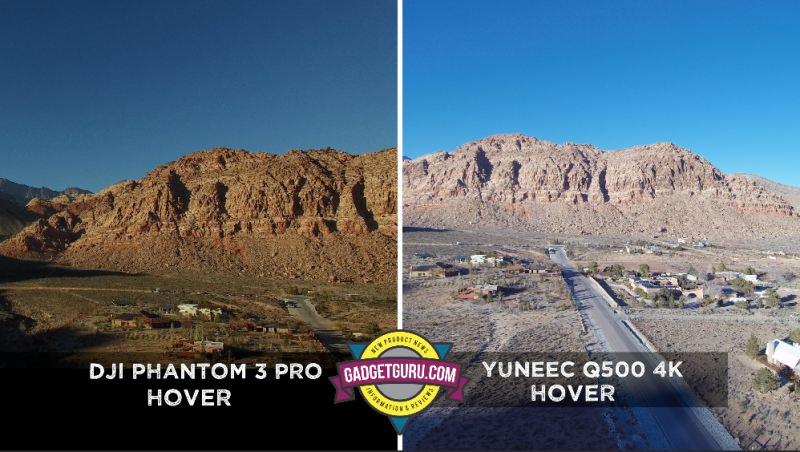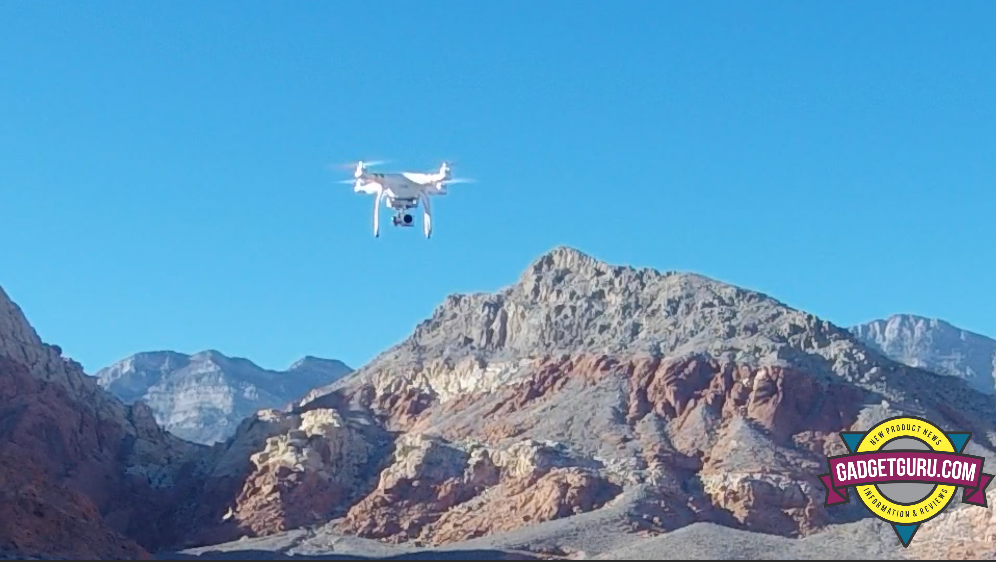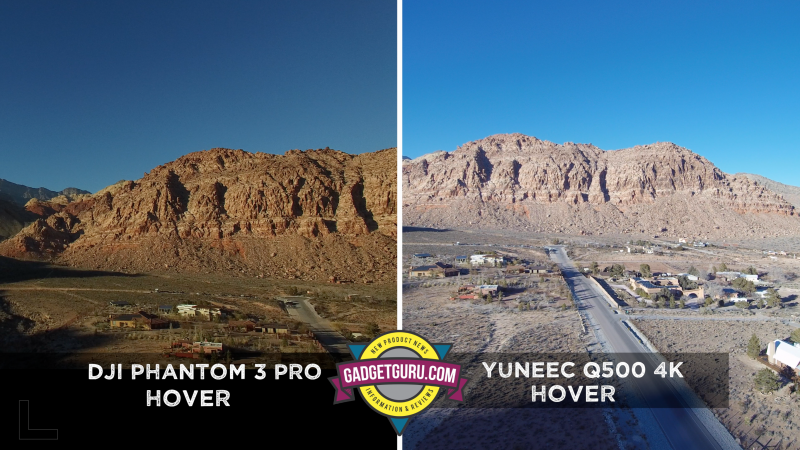Video Of Field Test: DJI Phantom 3 Pro vs. Yuneec Q500 4K
The video of this desert flying adventure is located at the bottom of this post. But, if you just scroll down, you’ll miss the commentary!
These days, there’s more copters, aka drones, available for both first time and seasoned flyers and, like any category of products, each specific model has its share of pros and cons. In this video I traveled out West to the Nevada desert with my Friend, Ted Foth of Urban Nest Realty in Las Vegas, Nevada to compare the ease of use, the flying characteristics and later, to compare the video generated from his Phantom 3 Professional to my Yuneec Q500 4K.

It’s important to note that when I perform my evaluations, I always use stock copters and neither of these two models has undergone any type of modification whatsoever.
Allow me to add, that while Ted is fairly new to the copter world, he jumped-in with both feet by attending a drone and photography school at the Santa Fe Photographic Workshop in New Mexico. This five day class combined classes in digital photography along with professional copter instruction led by DJI’s Romeo Durscher. For information on future classes, Click Here.
Because I started flying copters using a previous version of a DJI Phantom, I have great respect for its copters. DJI, singlehandedly, is most likely the single copter company that is responsible for getting so many people involved in this activity. In my opinion, DJI modernized the concept of providing all-in-one copters that include everything the buyer needs to go from the box to the air. It seems that prior to DJI launching its Phantom line the majority of the few copters that were in the air were piloted by hobby purist who took the time to build and create their flying machines from a variety of parts.

Giving credit where credit is due, DJI accomplished quite a feat with its all-in-one, ready to fly (RTF) copters, but it seems recently, it seems they may be experiencing some growing pains as, by just following Facebook user groups, it seems that DJI has been releasing a somewhat never ending stream of new firmware and/or software updates along with some cost cutting construction methods.
If I may editorialize from what I’ve read, some of these updates seem to be rushed out the door and not properly tested prior to release. While I don’t have any inside information on this, this is just an opinion. Based on an online poll conducted by the independently operated DJI Inspire 1 Owners Group and the DJI Phantom 3 Owners Group on Facebook at press time, asked the question, “Has your drone fallen out of the sky, thru (sic) no fault of your own?” 377 respondents answered No and 52 stated Yes. Another 17 responded, Yes, but it was a Phantom 2 model. Personally, considering this poll took place in February 2016, a time when much of the flying population is located in cold weather areas, I find this percentage to be somewhat of a concern.
It seems that some users have experienced issues that may or may not be related to the battery or possibly due to flawed software or firmware and may have caused some DJI copters to fall out of the sky. Yes, some instances can be caused by user error, but the timing of these episodes are so close to each other leads me to believe otherwise. I reached out to DJI PR for comment and the response was anything but informative.
While I’m not trying to yell fire in a crowded theater, I enjoy flying recreationally and take this activity responsibly and seriously. While DJI is, at this time, the sales leader and recognized brand of consumer copters/drones, I expect this company and any company selling consumer drones to adhere to the highest in safety standards. After all, hasn’t this industry had enough bad press?
I’m happy to say that my day of flying with Ted yielded no negative results as we flew safely through multiple batteries without a hiccup. Whew! However, the quality and stability of the generated video between the two copters are like day and night. Considering these two copters are priced in the same ballpark, if you’re considering the purchase of a copter based solely on the quality of the video, you’ll want to take a look at this video and let the tale of the tape (okay, SD card video) tell the story.

Like any category of products, when doing a direct comparison of two competing models you’ll find that both will have pros and cons. In a nutshell, the Yuneec model goes from the box to the air quicker than the Phantom, flies fairly slow and smooth and generates what I consider to be steady video. The Phantom is notably faster, has a much longer range that delivers video to the controller without lag or distortion, is quite nimble and is fun to fly. Against what some others have reported, in this situation, the Phantom generated a longer battery life than the Yuneec. In this usage both Ted and myself began landing procedures the moment the first low battery signal was delivered to the controller.
After viewing this video comparison, Ted will be changing out his props to see if that was the issue and if not, he will contact a DJI Dealer or the factory to see if a solution can be found. I will say that on my Phantom 2 Vision +, the video results seemed to be smoother than what Ted experienced with his Phantom 3 Professional.
Since video quality is subjective, I’ll let you be the judge in which of the two you prefer for your usage. I will state that neither copter’s video files were color corrected nor enhanced. What you see in the video is what appeared on my video editing timeline.
UPDATE: It seems some have questioned my methods in comparing these two models and I address the concerns in this post: Is The Gadget Guru On Yuneec’s Payroll? Of course, your comments and opinions are welcomed.














